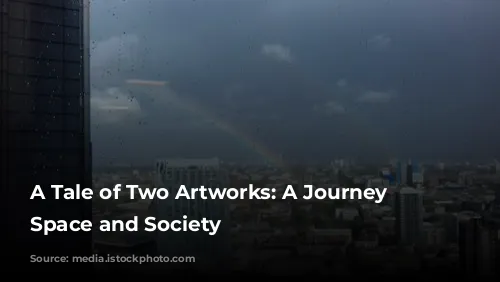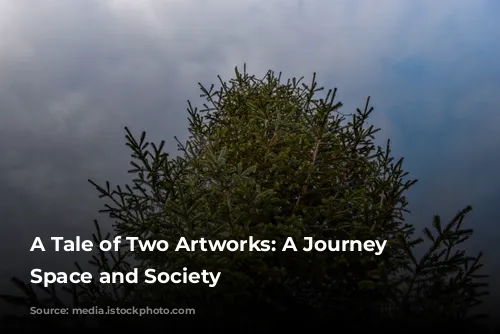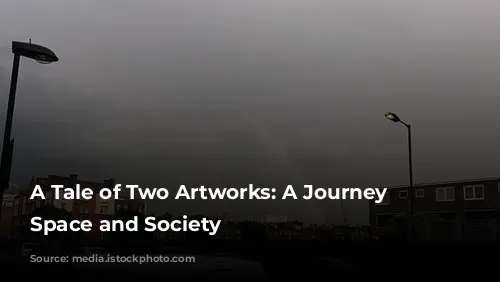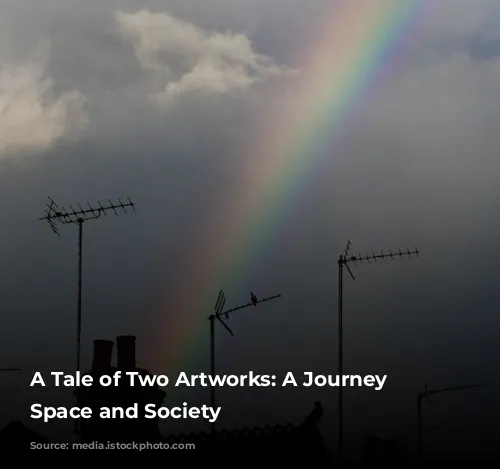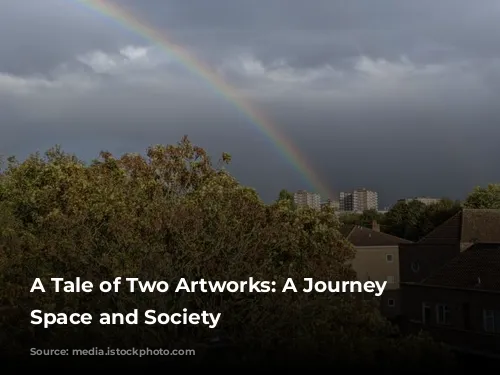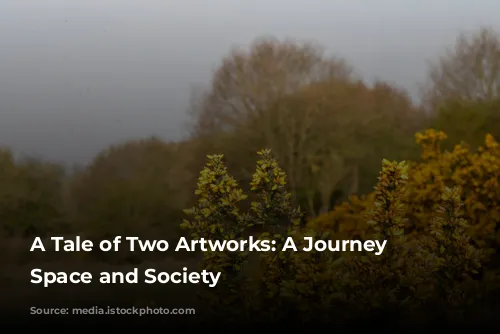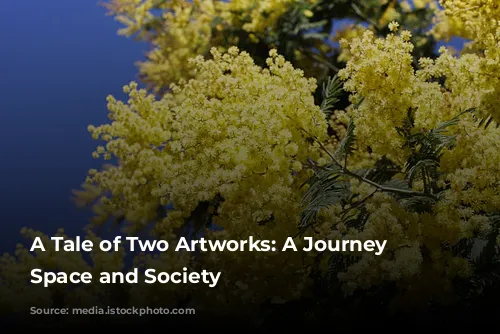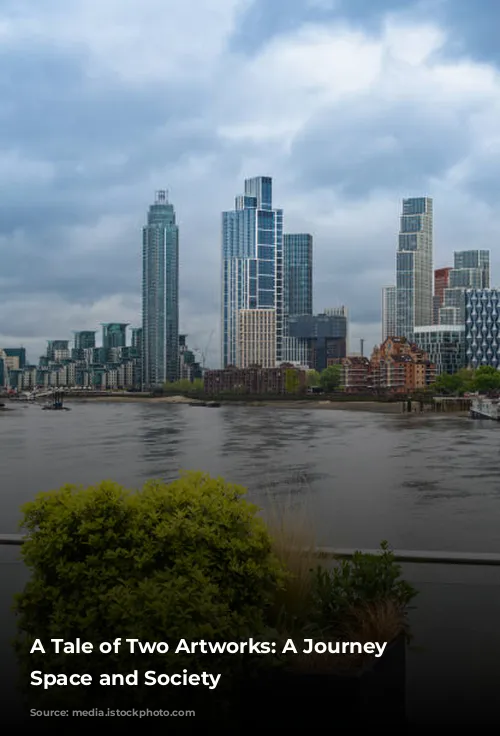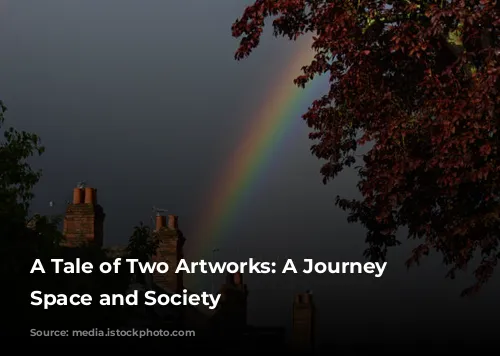Imagine this: a young woman balances effortlessly on one hand, her flowing skirt obscuring her face, on a vast empty beach. Now, picture a towering metallic rocket, its imposing form rising like a giant symbol. These two seemingly unrelated images, by artists Rose Finn-Kelcey and Goshka Macuga, actually share a profound connection. Both artworks, created decades apart, delve into the complex interplay between humanity and the space we occupy, exposing the power structures that shape our world.
This exploration begins with Rose Finn-Kelcey’s iconic photograph, “The Restless Image,” a poignant snapshot of her mother performing a handstand on the beach. The image captures a moment of defiance, a playful subversion of societal norms. The artist’s choice to conceal her face, traditionally the most recognized aspect of a portrait, highlights the power dynamics that dictate how women are viewed and represented. This is further emphasized by the title, borrowed from René König’s book on the political history of women’s dress, which underscores the historical struggle for women’s liberation.
Meanwhile, Goshka Macuga’s monumental sculpture “GONOGO,” originally intended for London’s Trafalgar Square, challenges the very notion of public space and its monuments. This towering, imposing structure evokes a sense of transcendence, a yearning to escape the confines of earthly boundaries. While initially envisioned as a commentary on public space, its impact extends beyond the physical realm. It speaks to the power dynamics that govern our societal landscapes, raising questions about the ways in which power is wielded and how we navigate the complexities of our shared spaces.

Challenging Authority, Revealing Truths
Finn-Kelcey’s artistic journey, like many of her contemporaries, was driven by a desire to break free from the confines of traditional art institutions. She sought to challenge the status quo, to create art that resonated with the lived experiences of individuals and communities, engaging directly with the world around her. This led her to create public art, transforming everyday objects into potent symbols of social and political discourse.
One of her most notable works, “Here Is a Gale Warning,” boldly utilizes a flag as a medium, transforming a symbol of authority into a poignant warning about climate change. This intervention in the public sphere generated immediate reactions, sparking public discourse and revealing how messages can be manipulated and distorted, even within seemingly neutral platforms like the media. Finn-Kelcey, a true visionary, was already grappling with the complex relationship between humanity and the environment in the early 1970s, foreshadowing the urgent issues we face today.

A Legacy of Space, Change, and Transformation
Both artists, though operating in different eras, share a profound connection to the spaces they inhabit, allowing their environments to inform their artistic practice. Macuga, like Finn-Kelcey, explores the multifaceted nature of space, utilizing the physical environment as a canvas for her art. Her recent work, “I could have gone on flying through space forever but I have always loved a window, especially an open one,” exemplifies this approach. The work, a mixed-media installation featuring animal figures and text-based flags, embodies a sense of wonder and caution.
This piece further highlights Macuga’s interest in examining the interplay between nature and technology, questioning our relationship with the natural world and the future of our planet. Through the use of animal imagery, the installation explores the complex relationship between humans and the animal kingdom, highlighting the delicate balance of ecosystems and the consequences of environmental neglect.
The recurring motif of flags, both in Finn-Kelcey’s and Macuga’s work, serves as a powerful symbol of communication, transformation, and the power of language. From the fluttering flags of Finn-Kelcey’s “Here Is a Gale Warning” to the enigmatic banners in Macuga’s installation, these objects act as powerful communicators, carrying messages that can be interpreted in various ways. This reflects a shared interest in exploring the complex nature of communication, the ways in which meaning is constructed, and the potential for misinterpretation and manipulation.
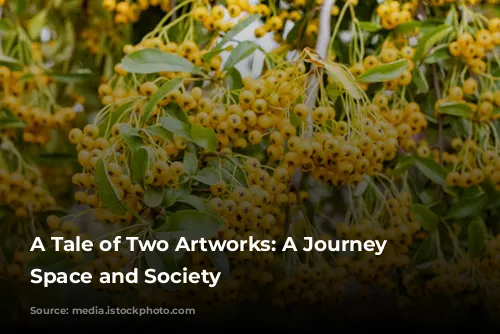
A Shared Vision: A Call to Action
Finn-Kelcey’s work, though often overlooked in her lifetime, has gained significant recognition in recent years, showcasing her pioneering spirit and enduring relevance. Her bold use of public space, her insightful commentary on power structures, and her unwavering commitment to environmental awareness continue to inspire and challenge viewers today.
Similarly, Macuga’s artistic practice, characterized by its interdisciplinary approach and thought-provoking commentary on the human condition, resonates with audiences across generations. Her work invites viewers to engage in critical dialogue, prompting reflection on the complex realities of our world.
The remarkable connection between these two artists, separated by time and artistic styles, reveals a shared vision – a desire to use art as a catalyst for social and environmental change. Their works, through their bold interventions in public space and their insightful observations, serve as powerful reminders of the interconnectedness of our world, urging us to confront the complexities of our society and to act as responsible stewards of our planet.
